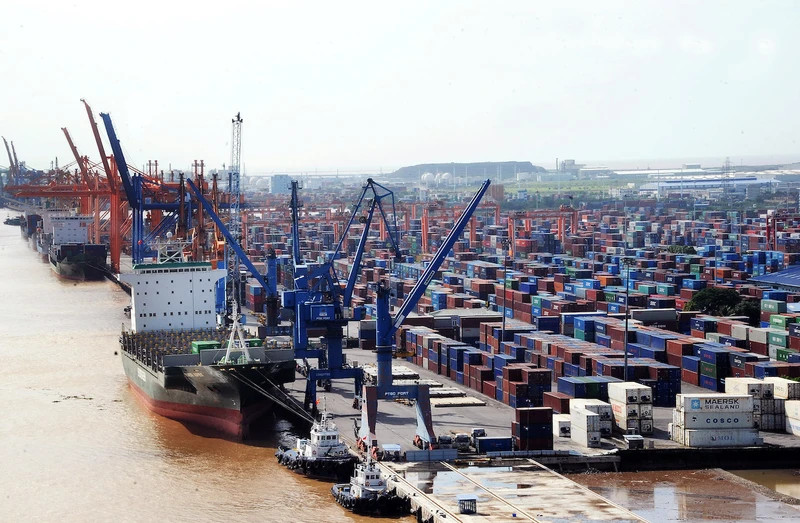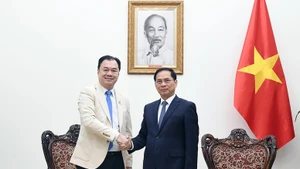The FDI capital has focused mainly on provinces and cities that have many advantages in attracting investment, such as Hanoi, Quang Ninh, Thai Nguyen, Ba Ria-Vung Tau, Bac Ninh, Dong Nai, Bac Giang, Ho Chi Minh City and Hai Phong.
A notable point is that FDI capital increased sharply in both the number of projects, total registered capital and attraction of large-scale projects, opening up the expectation that this new capital will have a strong impact on economic growth in 2024 as well as the following year.
The disbursement situation of FDI projects has been positive, showing that foreign investors' commitment to Vietnam is genuine. Exports of the FDI enterprise sector in the first two months of the year increased sharply over the same period and compared to the previous month, with a trade surplus of 8.9 billion USD (excluding crude oil), offsetting the trade deficit of the domestic enterprise sector, helping the trade balance maintain a surplus of about 4.63 billion USD.
These numbers showed that the recovery and growth momentum of FDI capital flows into Vietnam is trending stronger and has been continuously maintained since July 2023.
There are many reasons why Vietnam has become an attractive destination for investors across five continents, considered by investors as their "second homeland". These are political security and macroeconomic stability, which are the result of high-level diplomatic activities of Party and State leaders as well as high-level diplomatic delegations of countries coming to Vietnam in 2023, as well as considerable investment cooperation opportunities,as Vietnam's economy is assessed to have great potential and positive prospects in the coming years.
More and more large corporations in the high-tech and semiconductor industries of the US, EU countries, the Republic of Korea, and Japan are interested in accessing and promoting investment opportunities in Vietnam.
In this trend, the Government has identified three breakthroughs to attract investors and retain the world's leading technology corporations. That focuses on improving infrastructure and land while training and building high-quality human resources to meet investor recruitment requirements and institutional reform.
Regarding human resources, it is expected that in the first quarter of 2024, the Ministry of Planning and Investment will submit to the Government a draft project for human resource development in the semiconductor industry until 2030, with a vision to 2045.
Currently, the project’s construction progress is being accelerated to achieve the goal that by 2030, Vietnamese engineers will be able to deeply participate in the design process of modern semiconductor circuits, as well as the packaging and testing stages, mastering part of packaging and testing technology; gradually grasping technology in the production process when working in semiconductor factories.
The project also set the goal of training 50,000 engineers to serve the semiconductor industry in all stages of the value chain. By 2045, Vietnam will become an important link in the value chain of the global semiconductor industry, with a team of engineers and experts capable of meeting the development requirements of Vietnam's semiconductor industry in both quality and quantity.
For the economy to grow and to meet expectations, the Government has directed ministries, branches and localities to focus on renewing old growth drivers in addition to exploring and taking advantage of new growth drivers coming from developing high-tech and new industries.
In that context, having breakthrough solutions to retain the world's leading technology corporations, especially in the fields of high technology, semiconductor chips, and artificial intelligence (AI), is an important step for foreign capital flows to contribute effectively to the overall growth of the economy.
















